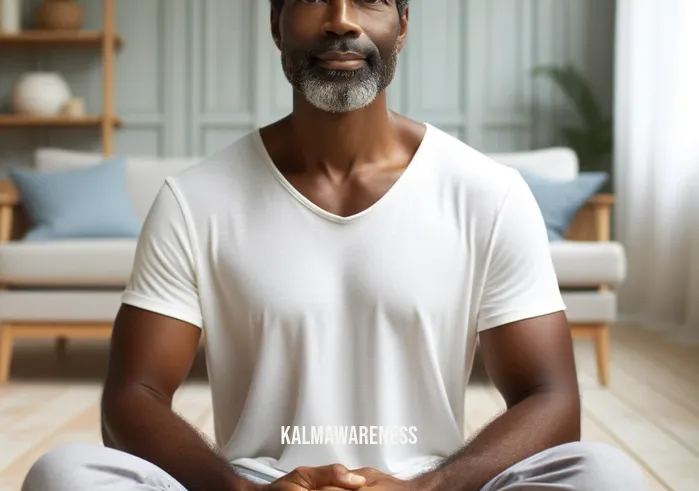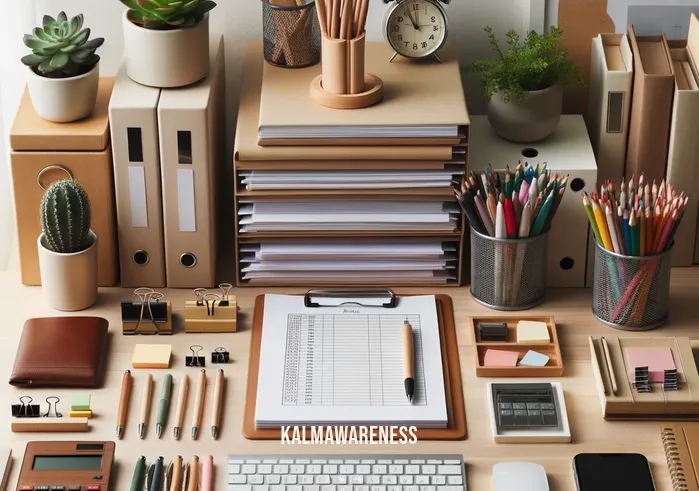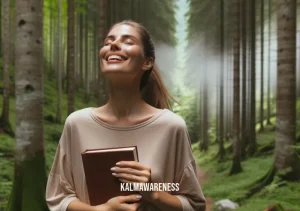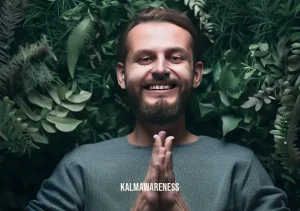Allaying Anxiety: A Journey Towards Mindful Peace
In our bustling modern world, the phrase “allay anxiety” is more relevant than ever, especially for young adults aged 20-40. It’s about finding calm in the chaos, turning down the volume of life’s endless noise, and discovering a sense of inner peace. But how does one begin this journey?
Understanding Anxiety
First, let’s break down what we’re dealing with. Anxiety isn’t just a fleeting feeling; it’s a complex emotion that can impact our lives in profound ways. It’s like a storm in the mind, sometimes coming out of nowhere, other times building up over days or weeks. The key to calming this storm lies not in avoiding it, but in understanding and navigating through it.
The Role of Mindfulness
This is where mindfulness comes into play. Mindfulness is more than a buzzword; it’s a powerful tool in our mental health arsenal. It’s about being present in the moment, acknowledging our thoughts and feelings without judgment. As we practice mindfulness, we learn to observe our anxiety, not as a controlling force, but as a passing state that we can manage and move through.
“The greatest weapon against stress is our ability to choose one thought over another.” – William James
Practical Steps to Allay Anxiety
Let’s explore some actionable steps to help allay anxiety:
Mindfulness-Based Stress Reduction: This approach combines mindfulness meditation and yoga to reduce stress and anxiety. A great resource to begin this journey is A Mindfulness-Based Stress Reduction Workbook.
Meditation Techniques: Different forms of meditation can help calm the mind. Techniques like Release Worry Meditation and Body Scan Meditation are excellent starting points.
Lifestyle Adjustments: Simple changes in your daily routine, such as regular exercise, a balanced diet, and adequate sleep, can significantly impact your anxiety levels.
The Power of Breath
Remember, the breath is a powerful tool in managing anxiety. Focused breathing exercises can provide an immediate sense of relief and are a cornerstone of many meditation practices.
Moving Forward
Anxiety is a journey, not a destination. It’s about learning, growing, and adapting. In the next segment of our essay, we’ll delve deeper into specific mindfulness techniques and how they can be integrated into daily life to manage anxiety more effectively.
Join us in the next segment, where we’ll explore the transformative power of mindfulness in greater depth, offering insights and strategies to help you navigate the often turbulent waters of anxiety. Let’s continue this journey together, towards a more peaceful and balanced state of mind.

Deepening the Journey: Mindfulness in Action
In the first segment, we began our exploration of how to allay anxiety through mindfulness. Now, let’s deepen our understanding and see these concepts in action. Engaging with mindfulness isn’t just about theory; it’s a practical, everyday tool that can transform our experience of anxiety.
The Story of Maya: A Case in Mindful Transformation
Let’s consider Maya’s story. Maya, a 28-year-old graphic designer, found herself overwhelmed by anxiety. Deadlines, personal challenges, and the constant buzz of city life left her in a state of constant stress. It was only when she started integrating mindfulness into her daily routine that she noticed a change. Through practices like meditation and focused breathing, Maya began to find moments of calm in her day. This wasn’t an overnight transformation, but a gradual journey towards managing her anxiety more effectively.
Mindfulness Techniques in Practice
What exactly did Maya do? Here’s a look at some techniques that can be part of your mindfulness toolkit:
Practicing Equanimity: This involves maintaining mental calmness and composure in difficult situations. Learn more about it here.
Engaging with Mindful Reading: Consider exploring resources like Breathe Magazine, which offer insights into mindfulness practice.
Autogenic Training: This self-relaxation technique can be particularly effective. Discover how it works here.
The Role of Mindfulness in Everyday Life
Mindfulness isn’t just for moments of acute anxiety; it’s a tool for everyday life. Incorporating mindfulness practices into your daily routine can help maintain a baseline of calm and make it easier to manage moments of heightened anxiety.
Mindfulness in Practice: A Comparative Overview
| Practice | Benefits | Ideal Time |
|---|---|---|
| Equanimity | Balances emotional responses | During stress |
| Mindful Reading | Enhances focus and calm | Anytime |
| Autogenic Training | Reduces stress, improves sleep | Morning/Night |
“You can’t stop the waves, but you can learn to surf.” – Jon Kabat-Zinn
Preparing for Deeper Exploration
As we delve further into the world of mindfulness and its role in allaying anxiety, it’s important to remember that this is a personal journey. What works for one person may not work for another. The key is to explore, experiment, and find what resonates with you.
In the concluding segment of our essay, we’ll explore advanced mindfulness techniques and how to integrate them into a lifestyle that supports mental well-being. We’ll also touch upon the importance of community and support in this journey. Stay tuned for insights that could be the key to unlocking a calmer, more centered version of yourself.

Embracing Mindfulness: The Path to Alleviating Anxiety
In our final segment, we’ll weave together the threads of our discussion on how to allay anxiety through mindfulness, providing practical applications and summarizing our key insights. This journey, while deeply personal, shares common steps that anyone can follow to find greater peace and emotional balance.
Integrating Mindfulness into Daily Life
Having explored the basics of mindfulness and its techniques, let’s focus on integrating these practices into our daily routines. It’s about making mindfulness a habit, a part of the fabric of our lives.
Daily Practices for Mindful Living
Mindful Mornings: Begin your day with a mindfulness exercise, such as the Morning Anxiety Meditation. This sets a calm tone for the day ahead.
Mind-Body Connection: Understand how your body responds to stress and anxiety. Techniques like The Body Talks and Meditation Helps can deepen this understanding.
Breathing Exercises: Incorporate simple breathing exercises into your day, especially during moments of stress. Balanced breathing is a powerful tool for instant calm.
The Importance of Consistency
Consistency is key in reaping the benefits of mindfulness. It’s not about perfection; it’s about persistence. Even on busy days, a few minutes of mindfulness can make a significant difference.
Mindfulness as a Lifestyle Choice
- Make mindfulness a non-negotiable part of your day.
- Explore various mindfulness techniques and find what works best for you.
- Remember, mindfulness is a skill that improves with practice.
“Mindfulness isn’t difficult, we just need to remember to do it.” – Sharon Salzberg
Reflecting on Our Journey
As we conclude, let’s reflect on the key points we’ve discussed:
- Understanding Anxiety: Recognizing anxiety as a manageable part of life.
- Mindfulness Techniques: Tools like equanimity practice, mindful reading, and autogenic training to allay anxiety.
- Maya’s Story: A real-life example of how integrating mindfulness can transform one’s experience with anxiety.
- Practical Applications: Incorporating mindfulness into everyday life for lasting change.
The Road Ahead
Now that you’ve gained insights into allaying anxiety through mindfulness, what will your journey look like? Consider these questions:
- How can you integrate mindfulness into your daily routine?
- What mindfulness practices resonate most with you?
- How can mindfulness change your relationship with anxiety?
As you reflect on these questions, remember that the path to managing anxiety is a continuous one, filled with learning and growth. We encourage you to explore more on this topic on our website and share your experiences. Your journey could inspire others to embark on their own path to mindfulness and emotional well-being.





